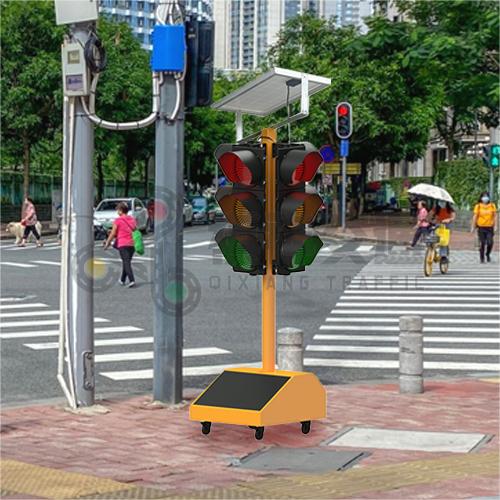Portable traffic lights have become an essential tool for controlling traffic in a variety of situations. Whether it’s construction work, road maintenance, or a temporary traffic diversion, these portable traffic lights play a vital role in keeping drivers and pedestrians safe. In this article, we’ll explore how these traffic lights work and the technology behind them.
Principle of portable traffic lights
First and foremost, portable traffic lights work on the same principle as permanent traffic lights. They use a combination of red, yellow, and green lights to signal drivers when to stop, when to stop, and to proceed safely. However, unlike permanent traffic lights that are hardwired to the grid, portable traffic lights are designed to be mobile and self-sufficient.
Parts of portable traffic lights
The main part of the portable traffic light is the control panel, which is responsible for programming and synchronizing the lights. This control panel is typically housed within a weatherproof and durable enclosure designed to withstand harsh conditions. It contains the circuitry and software needed to manage traffic.
To power these lights, portable traffic lights typically rely on rechargeable batteries. These batteries can provide enough power to keep the lights running for long periods of time, ensuring uninterrupted traffic control. Some models also feature solar panels that convert sunlight into electricity, offering an environmentally friendly alternative to conventional batteries.
The control panel is connected to the lights through wireless communication technology. This wireless connection allows for seamless communication between the control panel and lights without the need for physical cables. This feature is especially useful when setting up temporary traffic lights in challenging or remote locations.
Once the control panel is programmed, the lights follow a specific sequence to regulate traffic. The control panel sends signals to the lights over a wireless connection, indicating when to change from green to yellow, and when to change from yellow to red. This synchronized sequence ensures a clear and consistent signal to all drivers, minimizing confusion and accidents.
Furthermore, portable traffic lights are often equipped with additional features to enhance their functionality and safety. For example, they may include pedestrian signals to ensure pedestrians cross the road safely. These signals are synchronized with vehicle signals to provide pedestrians with designated time periods to cross the road safely.
In conclusion
Portable traffic lights are an important tool for managing traffic flow in temporary situations. By combining rechargeable batteries, wireless communications, and advanced control panel technology, these traffic lights can effectively regulate traffic and ensure the safety of drivers and pedestrians. The ability to adapt to changing traffic conditions, combined with their mobile nature, make them an invaluable asset in any situation requiring temporary traffic control.
If you are interested in portable traffic light, welcome to contact portable traffic light supplier Qixiang to read more.
Post time: Jul-11-2023







